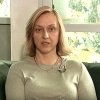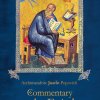RENEWAL OF THE PATRIARCHATE OF PEC
The renewed Patriarchate of Pec existed for almost two hundred years (1557-1766). By mid 16th century, Balkans, and especially those areas inhabited by Serbs, became a transitory region for conquering Turkish armies going west, and the Ottoman authorities wanted to appease Orthodox Serbs by granting concessions to their Church. It is for this reason that Patriarchate of Pec was renewed with Turkish approval. The Grand Vizier Mehmed (Muhammad) Sokolovic (Sokolovich), a janizary of Serbian stock who became very successful in climbing the Ottoman social and political ladder, played the key role in this affair. It was through his assistance that the Patriarchate was renewed in 1557, its first Patriarch being Vezier’s very brother — Makarije Sokolovic (1557-1571, Macarius). This was a grand occasion for Serbs and their Church, Patriarchate of Pec spiritually united all Serbian ethnic regions into one. Even parts of Bulgaria and Hungary came under its jurisdiction. Old dioceses were renewed and new ones formed: Dioceses of Trebinje (Trebinye) in Herzegovina, Pozega (Pozhega) in Slavonia, Marca, Jenopolis, Vrsac (Vrshats), Budim … All in all there were around 40 dioceses in the wide region covering the area from Budim (Hungary) to the river Drim in Albania, and from Western Bulgaria to the Adriatic Sea.
Serbian Church now functional under now more favourable circumstances when compared to those of the early years of Ottoman rule. New monasteries and churches were allowed to be built (Canyon of Ovcar [Ovchar] and Kablar monasteries), and many old ones restored and redecorated (Pec, Gracanica). Political status of the Serbian Patriarch was much similar to the one held by Patriarch of Constantinople. He was proclaimed “People’s Leader” and bestowed considerable “worldly” authority over his Christian subjects. He gave suggestions to the Porte concerning elections of metropolitans and bishops, judged disputes among priests, raised Sultan’s annual taxes, solved marital disputes among Christians, held inheritance rights to the property of all those who became deceased but had no lawful heirs. Patriarch was a person of high standing both in the eyes of the Turks and among the Christian population. He travelled on horseback always accompanied by an escort and his official dignitaries. It, thus, happened that under the Turkish yoke the Church and the Patriarch assumed, out of necessity, that role which was normally held by the State and the “worldly” rulers among the Serbs.





